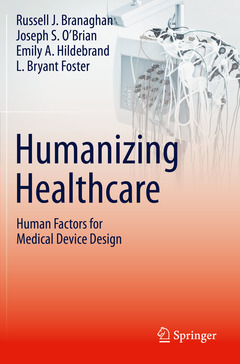Russell J. Branaghan, PhD, has worked as a human factors engineer, research scientist, consultant and educator for over 30 years. He is President of Research Collective, a Human Factors and User Experience (UX) consulting firm and laboratory in Tempe, AZ. His work centers on healthcare human factors and user experience for leading companies in robotic surgery, cardiac rhythm management, diagnostic imaging, chronic disease management (e.g., hemophilia, diabetes), artificial organs, in vitro diagnostics, reprocessing, healthcare apps, wearables home health, and many others. Russ also serves as Associate Professor of Human Systems Engineering, Co-Director of the Master of Science in User Experience Program, and Director of the User Experience Laboratory (XLab) in the Ira A. Fulton Schools of Engineering at Arizona State University (ASU). He holds additional affiliations with the Kern Center for the Science of Healthcare Delivery at Mayo Clinic, the ASU-Mayo Center for Innovative Imaging, and the Master of Product Design and Development program at Northwestern University. His research has been funded by The National Science Foundation, Mayo Clinic, The Veterans Health Administration, Federal Aviation Administration, Air Force Research Laboratory, Office of Naval Research, Motorola and others. His teaching has been recognized with awards from ASU and Northwestern. Prior to returning to academics and consulting, Russ held leadership positions in human factors and user experience at Hewlett Packard, IBM, Fitch and Lextant Corporation. An active researcher, Russ has edited one book and published over 100 journal articles, book chapters, and conference proceedings. He frequently serves as a reviewer for scientific and medical journals, and has sat on many editorial and industry boards, including the Human Factors and Ergonomics Society (HFES) Product Design Technical Group, the Organizing Committee for the HFES Healthcare Symposium, the Editorial Board of the




